The cosmetics industry stands at a pivotal moment in its evolution, facing an unprecedented challenge from sophisticated counterfeiters while simultaneously experiencing explosive growth in anti-counterfeit packaging solutions. The market for anti-counterfeit cosmetic packaging has reached extraordinary heights, with projections ranging from USD 43.3 billion in 2025 to USD 101.6 billion by 2035, representing a compound annual growth rate of 8.9%. This remarkable expansion reflects not just market opportunity, but a fundamental transformation in how beauty brands protect their products, preserve their reputation, and maintain consumer trust in an increasingly complex global marketplace.
1. Market Dynamics and Growth Projections
The anti-counterfeit cosmetic packaging market is experiencing unprecedented growth across multiple dimensions. According to recent market analysis, the global market size varies across different research methodologies, with some projections suggesting even higher valuations. Precedence Research indicates the market could reach USD 577.61 billion by the forecast period, while other sources project growth to USD 87.73 billion by 2034, demonstrating the significant scale and variance in market assessment methodologies.
The growth trajectory is being driven by several converging factors that are reshaping the industry landscape. Rising consumer awareness about product authenticity, escalating regulatory requirements across major markets, and the explosive growth of e-commerce platforms have created a perfect storm demanding sophisticated anti-counterfeit solutions.
Regional Market Performance and Regulatory Landscape
The United States continues to lead global adoption with an 8.6% CAGR from 2025 to 2035, driven by stringent FDA and FTC regulations that mandate clear supply chain visibility and ban counterfeit cosmetics. The regulatory environment has become increasingly sophisticated, with agencies working closely with cosmetic brands to implement next-generation authentication technologies including digital watermarks, NFC-enabled packaging, and unique serialization codes.
The European market demonstrates strong momentum with an 8.2% CAGR in the United Kingdom, supported by the European Union’s Intellectual Property Action Plan 2024, which introduced enhanced traceability requirements for cosmetic products. France, Germany, and Italy are leading the European charge, with companies concentrating efforts on high-tech authentication solutions in response to strict regulations imposed by the European Medicines Agency (EMA) and the European Union Intellectual Property Office (EUIPO).
Asia-Pacific markets are experiencing particularly robust growth, with Japan showing 8.5% CAGR and South Korea 8.4% CAGR. China’s regulatory landscape has become especially significant with new NMPA regulations effective January 2025, mandating tamper-evident, serialization-capable packaging for imported and high-value local cosmetic products. This regulatory shift has created immediate market opportunities for anti-counterfeit solution providers and forced rapid adaptation across the industry.
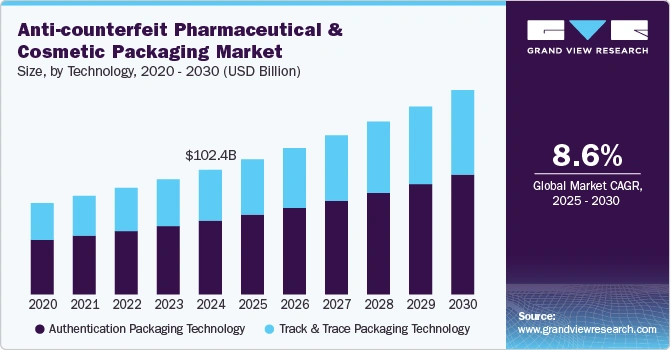
2. RFID Technology: Revolutionizing Cosmetics Authentication
Understanding RFID in the Cosmetics Context
Radio Frequency Identification (RFID) technology represents a fundamental shift in how the cosmetics industry approaches product authentication, supply chain management, and consumer engagement. At its core, RFID uses electromagnetic fields to automatically identify and track tags attached to cosmetic products, creating a wireless communication system that operates without requiring direct line of sight or physical contact between readers and tags.
In the cosmetics industry, RFID systems consist of three critical components working in harmony: RFID readers that transmit radio signals to activate tags, antennas that facilitate electromagnetic energy transmission, and RFID tags containing microchips that store and transmit product identification data. When an RFID reader sends radio waves, nearby cosmetic products equipped with RFID tags respond by transmitting their stored information, typically including unique identifiers, manufacturing data, and authentication codes.
Why RFID is Perfectly Suited for Cosmetics
The cosmetics industry presents unique challenges that make RFID technology particularly valuable. Unlike traditional sectors, cosmetics face heightened counterfeiting risks due to high-value products, complex supply chains, and significant e-commerce penetration. RFID addresses these challenges through several key capabilities:
Miniaturization and Aesthetic Integration
Modern RFID tags can be seamlessly integrated into cosmetic packaging without compromising product aesthetics. Passive RFID tags, which are powered entirely by energy from reader radio waves, are lightweight and can be embedded in labels, bottles, or caps without adding bulk or affecting the premium appearance that cosmetics brands require.
Multi-Frequency Adaptability
RFID operates across different frequency ranges, each suited to specific cosmetics applications:
- High Frequency (HF) at 13.56 MHz provides optimal performance for small cosmetic containers, offering reading ranges from inches to several feet
- Ultra-High Frequency (UHF) at 860-960 MHz enables warehouse and distribution center applications with reading ranges exceeding 25 feet
- Near Field Communication (NFC), a subset of HF, allows consumer smartphone interaction for instant product verification
Data Storage Capabilities
Unlike simple barcodes that store limited information, RFID tags can contain up to 2,000 KB of data, enabling cosmetics brands to embed comprehensive product information including manufacturing dates, batch numbers, ingredient lists, expiration dates, and even marketing content accessible through consumer applications.
Transformative Impact on the Cosmetics Industry
Supply Chain Transparency and Traceability
RFID technology has revolutionized cosmetics supply chain management by enabling real-time tracking from manufacturing through final sale. Each cosmetic product equipped with RFID tags creates a digital trail that documents its journey through production facilities, distribution centers, retail locations, and ultimately to consumers.
This comprehensive traceability addresses critical industry challenges including ingredient sourcing verification, quality control monitoring, and regulatory compliance documentation. For premium cosmetics brands, RFID provides the transparency increasingly demanded by conscious consumers who want visibility into product origins and manufacturing practices.
Counterfeit Prevention and Brand Protection
The cosmetics industry loses an estimated $12-15 billion annually to counterfeiting, with fake products posing serious health risks through unregulated ingredients and contaminated formulations. RFID technology creates multiple layers of protection against counterfeiting:
Unique Digital Fingerprints: Each RFID tag contains encrypted data that creates a unique digital identity for individual products, making replication extremely difficult for counterfeiters.
Multi-Point Verification: RFID enables authentication at multiple checkpoints throughout the supply chain, creating redundant security measures that identify counterfeit products before they reach consumers.
Real-Time Authentication: Consumers can instantly verify product authenticity using smartphone applications that communicate with RFID tags, eliminating uncertainty about product legitimacy.
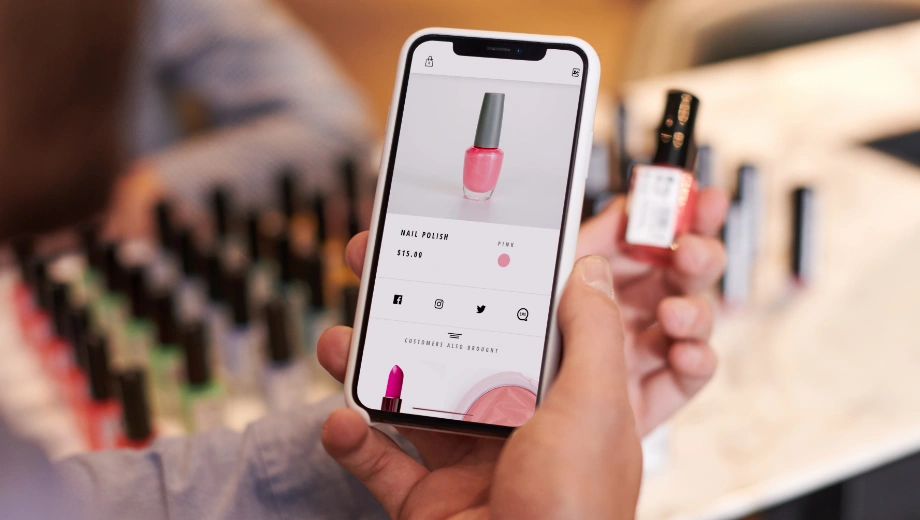
Enhanced Consumer Engagement and Experience
RFID technology transforms the consumer experience by providing instant access to comprehensive product information and authentication capabilities. Through NFC-enabled smartphones, consumers can:
- Verify product authenticity immediately upon purchase
- Access detailed ingredient information and usage recommendations
- View manufacturing dates and quality certifications
- Connect with brand content including tutorials and promotional materials
- Register products for warranty and loyalty program benefits
This enhanced engagement creates stronger brand relationships while providing cosmetics companies with valuable consumer behavior data and direct communication channels.
Inventory Management and Operational Efficiency
The implementation of RFID in cosmetics operations delivers significant efficiency improvements:
Automated Inventory Tracking: RFID readers can simultaneously scan multiple products, reducing manual inventory processes and improving accuracy in warehouses and retail environments.
Loss Prevention: Real-time tracking capabilities help identify theft, shrinkage, and unauthorized distribution, protecting brand value and reducing operational losses.
Recall Management: In the event of product recalls, RFID enables precise identification and location of affected products, minimizing consumer risk and brand damage while reducing recall costs.
Industry Adoption Drivers and Market Forces
Regulatory Compliance Requirements
Increasing regulatory requirements across major markets are driving RFID adoption in cosmetics. The European Union’s Intellectual Property Action Plan 2024 mandates enhanced traceability for cosmetic products, while China’s NMPA regulations require serialization-capable packaging for imported and high-value cosmetics. These regulatory frameworks create immediate market demand for sophisticated tracking technologies.
E-Commerce Growth and Digital Security Needs
The explosive growth of online cosmetics sales has created new challenges for brand protection and consumer confidence. E-commerce platforms represent over 35% of total cosmetics retail, making digital authentication essential for maintaining brand integrity in online marketplaces where consumers cannot physically examine products before purchase.
Premium Brand Differentiation
Luxury and premium cosmetics brands use RFID technology as a differentiating factor that justifies premium pricing while demonstrating commitment to quality and consumer safety. The ability to provide instant authentication and comprehensive product information creates tangible value that supports price premiums and builds brand loyalty.
Consumer Safety and Health Consciousness
Growing consumer awareness of health and safety risks associated with counterfeit cosmetics drives demand for reliable authentication methods. RFID technology provides the security and transparency that increasingly conscious consumers expect from cosmetics brands.
Technology Integration and Future Evolution
AI and Machine Learning Enhancement
The integration of RFID with artificial intelligence creates sophisticated authentication systems that can detect anomalies, predict counterfeiting attempts, and optimize supply chain operations. AI-powered analytics platforms process RFID data to identify patterns that might indicate security threats or operational inefficiencies.
Blockchain Integration for Immutable Records
The combination of RFID with blockchain technology creates tamper-proof digital ledgers that document product authenticity throughout the supply chain. This integration provides unprecedented transparency while ensuring data integrity across complex global distribution networks.
IoT Connectivity and Smart Packaging
RFID-enabled cosmetic packaging increasingly incorporates Internet of Things connectivity, creating smart packaging solutions that monitor storage conditions, track usage patterns, and provide personalized recommendations based on individual consumer behavior.
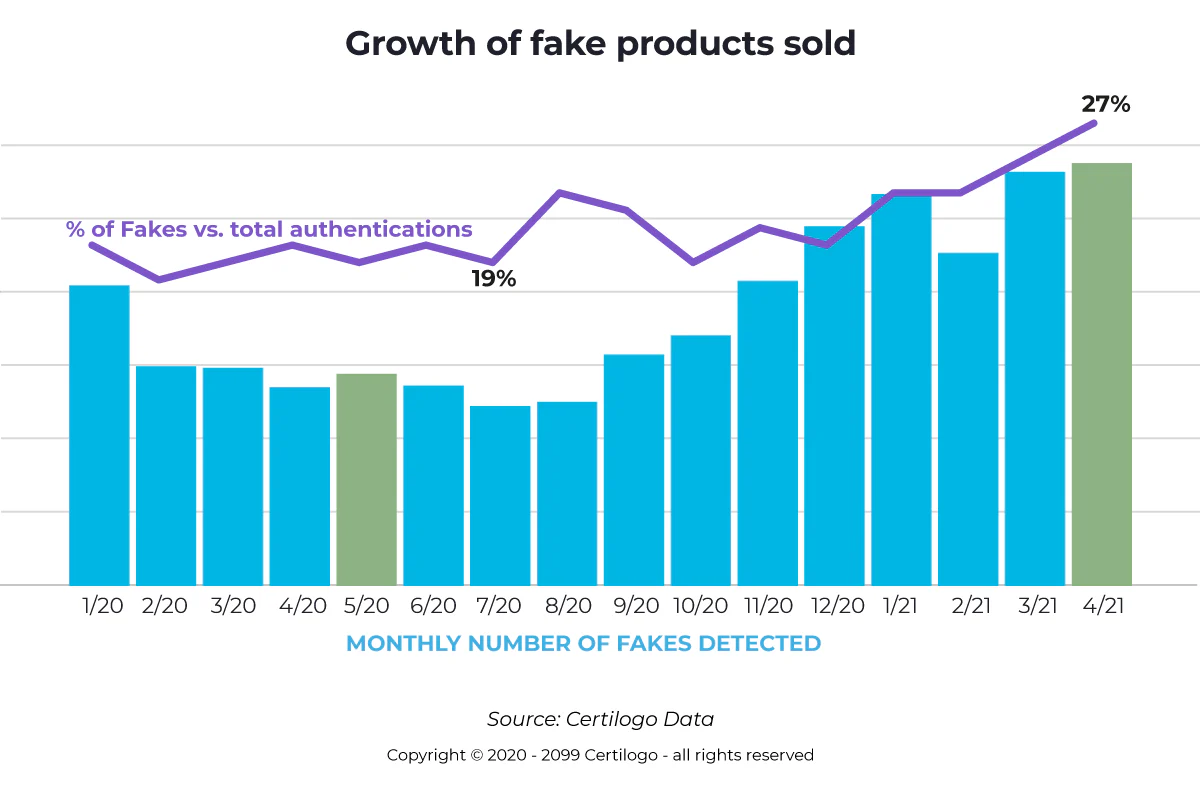
3. RFID Technology: The Market Leader
Radio Frequency Identification (RFID) technology has emerged as the undisputed leader in anti-counterfeit cosmetic packaging, projected to command 64% market share by 2025. This dominance reflects RFID’s unique capabilities in addressing the specific challenges facing the cosmetics industry, from manufacturing through final consumer purchase.
Market Size and Growth Projections for RFID in Cosmetics
The RFID for cosmetics market represents a specialized segment experiencing exceptional growth. Current market valuations suggest the sector is worth approximately $500 million in 2025, with projections showing a 15% CAGR from 2025 to 2033. This aggressive growth rate significantly outpaces the broader anti-counterfeit market, indicating the technology’s superior adoption rate and effectiveness in addressing industry challenges.
The segmentation of the RFID cosmetics market reveals strong growth across both tag types (passive and active) and applications spanning factory environments, warehouse operations, and retail implementation. Leading players including Paragon ID, Checkpoint Systems, and Avery Dennison are actively investing in research and development while forming strategic partnerships to capitalize on expanding market opportunities.
Technological Advantages Driving Adoption
RFID technology offers several critical advantages over traditional authentication methods:
- Real-time Verification Capabilities: Unlike static authentication methods such as holographic stickers or QR codes, RFID tags provide dynamic, real-time verification at multiple points throughout the supply chain. This continuous authentication capability creates a robust defense against sophisticated counterfeiting attempts.
- Encrypted Data Storage: RFID tags can store encrypted product information including detailed manufacturing data, batch numbers, expiration dates, and supply chain tracking information. This comprehensive data storage capability enables brands to provide consumers with unprecedented product transparency while maintaining security.
- Seamless Integration: Modern RFID systems integrate seamlessly with existing inventory management systems, enterprise resource planning platforms, and customer relationship management tools, creating comprehensive brand protection ecosystems without requiring complete operational overhauls.
- Consumer-Friendly Authentication: Through smartphone applications and in-store scanning devices, consumers can instantly verify product authenticity, creating immediate confidence in purchase decisions while providing brands with valuable consumer engagement data.

4. Market Trends and Technological Innovation
Intelligent Packaging Evolution
The cosmetics industry is witnessing a profound shift toward intelligent packaging solutions that extend far beyond simple authentication. Bottles are anticipated to account for 78% of the anti-counterfeit cosmetic packaging market by 2025, making them the most dominant format across product types. This dominance reflects the vulnerability of liquid cosmetics to counterfeiting and the effectiveness of bottle-based security solutions.
High-end cosmetic brands are investing heavily in proprietary bottle designs incorporating custom embossing, hidden security markers, and multi-layered security solutions including holographic foils, tamper-evident shrink sleeves, UV-sensitive inks, and RFID-enabled closures. These sophisticated approaches create multiple authentication layers that are extremely difficult for counterfeiters to replicate.
Intelligent bottles with QR or NFC-enabled authentication allow consumers to validate product authenticity using mobile applications, increasing customer trust while reinforcing brand value. The surge in e-commerce beauty sales, which represented over 35% of total cosmetic retail in 2024, has made secure packaging even more essential for maintaining brand integrity in digital marketplaces.
AI-Powered Authentication Systems
The integration of Artificial Intelligence (AI) into anti-counterfeit solutions represents a significant technological advancement. Companies like Cypheme are pioneering AI-backed anti-counterfeit technology as more effective solutions to traditional approaches. These systems employ sophisticated pattern recognition and machine learning algorithms to identify authentic products with unprecedented accuracy.
AI-powered systems address fundamental weaknesses in traditional authentication methods. While QR codes and NFC tags can be copied with relative ease, AI-based authentication creates unique digital fingerprints that are virtually impossible to replicate. This technological advancement represents a significant escalation in the ongoing arms race between brands and counterfeiters.
Blockchain Integration and Supply Chain Transparency
The integration of RFID technology with blockchain platforms creates transparent, tamper-proof digital ledgers that track products from manufacturing through final sale. This combination establishes immutable records of authenticity that benefit manufacturers, retailers, and consumers while creating sophisticated track-and-trace solutions for enhanced security and consumer engagement.
Blockchain integration enables brands to provide consumers with comprehensive product histories, including sourcing information, manufacturing details, quality control data, and distribution tracking. This level of transparency not only combats counterfeiting but also appeals to increasingly conscious consumers who demand visibility into product origins and manufacturing practices.
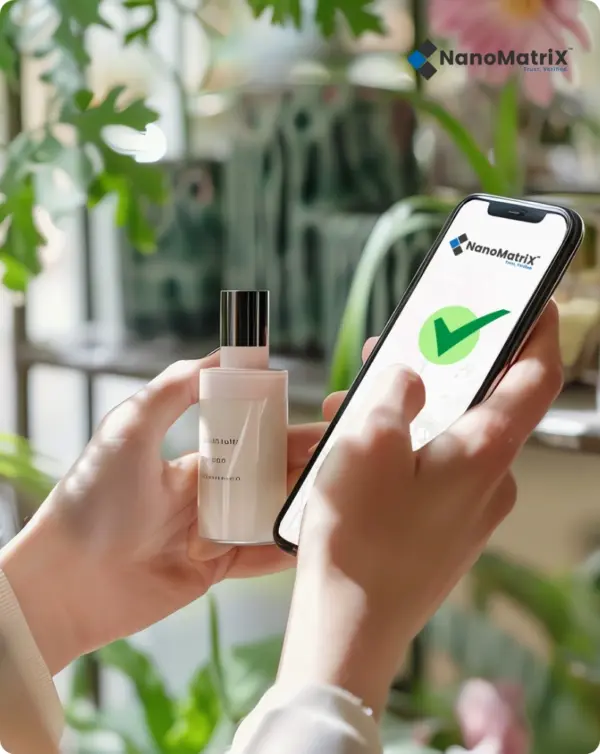
5. Industry Case Studies and Brand Implementations
Avery Dennison’s Strategic Market Expansion
Avery Dennison Corporation, commanding a 20-25% market share in the anti-counterfeit cosmetic packaging market, exemplifies strategic industry leadership through significant infrastructure investments. The company’s grand opening of its first RFID inlay and label manufacturing facility in Pune, India, on April 23, 2025, represents a pivotal commitment to serving one of the world’s fastest-growing RFID adoption markets.
This strategic facility enables Avery Dennison to respond more efficiently to regional market needs, reduce lead times, and better support customers across industries while contributing meaningfully to the Indian ecosystem. The investment demonstrates how industry leaders are positioning themselves for long-term growth in emerging markets with sophisticated beauty industries and proactive government initiatives to combat intellectual property violations.
Korean Cosmetics Brand Protection Case Study
A comprehensive case study involving a major Korean cosmetic company provides valuable insights into practical anti-counterfeit implementation. The company faced typical industry challenges including fake products being sold across multiple platforms at discounted prices, counterfeits entering authorized sales channels, and customers unknowingly purchasing fake products.
Implementation Strategy: The company deployed NanoMatriX’s TrackMatriX® Geo serialization system, incorporating custom verification workflows, inventory serial numbering, multi-product reporting, and counterfeits engagement reporting. The solution provided dynamic real-time consumer engagement platforms while incorporating high-security anti-copy features.
Results and Outcomes: The implementation enabled brand owners, distributors, and consumers to determine product authenticity, provided visibility along the supply chain, and enhanced overall branding. The scalable track and trace system, being cloud-hosted and secured, successfully authenticated products while engaging consumers and enabling accelerated purchase decisions.
Premium Beauty Brand Authentication Solutions
Another detailed case study involves a popular cosmetic and skincare brand operating globally through clinics, spas, and premium beauty salons. The company faced specific challenges including limited application space due to small product sizes, limited operational manpower, and the need for cost-effective, secure, and aesthetically pleasing brand protection.
Solution Implementation: Nabcore designed and implemented a dual QR code security holographic label supported by web applications and platform systems. The combination provided interlocking physical and digital verification featuring:
- Secured holographic labels with metallic appearance aligned to the brand’s advanced technology positioning
- Dual QR code system with exposed codes for multiple scans providing product and marketing information
- Hidden authentication codes for one-time consumer verification after purchase
- Multi-language support across more than six languages
Business Impact: The implementation provided multiple stakeholders with authentic product verification capabilities, enhanced supply chain visibility, and strengthened brand positioning while delivering cost-effective protection against counterfeiting and grey market activities.
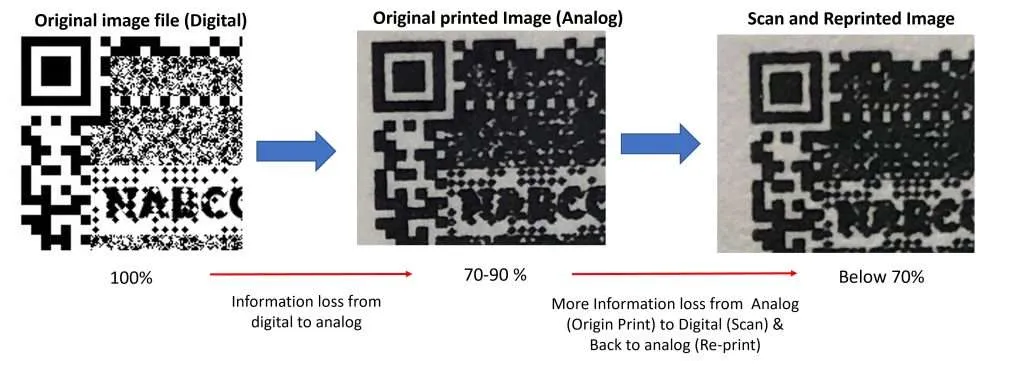
Unilever’s Digital Brand Protection Strategy
Global consumer goods giant Unilever demonstrates enterprise-level anti-counterfeit strategies through sophisticated digital brand protection initiatives. Research revealed that 70% of US listings for one of Unilever’s global beauty brands were being shipped from India, highlighting the complexity of modern counterfeit distribution networks and the need for comprehensive monitoring solutions.
Unilever’s approach combines digital marketplace monitoring, trademark enforcement, and physical product authentication to create comprehensive brand protection ecosystems. The company’s investment in digital footprint control demonstrates how major brands are adapting to e-commerce-driven counterfeiting challenges.
FOREO’s Innovation in Beauty Device Protection
Beauty device brand FOREO represents innovative approaches to anti-counterfeit protection in specialized product categories. The company has explored cutting-edge ways to prevent counterfeiting in the internet age, focusing on the unique challenges facing technology-integrated beauty products.
FOREO’s approach demonstrates how brands in specialized categories must develop tailored anti-counterfeit strategies that address both traditional counterfeiting methods and sophisticated technological replication attempts. The company’s initiatives highlight the evolution of anti-counterfeit strategies beyond traditional cosmetics into technology-enhanced beauty categories.
6. Technology Integration and Market Innovation
Cloud-Based Authentication Platforms
The cosmetics industry is rapidly adopting cloud-based authentication platforms that provide scalable, cost-effective anti-counterfeit solutions. These systems enable real-time verification across global supply chains while providing brands with comprehensive analytics and consumer engagement data.
Cloud platforms offer significant advantages including reduced infrastructure costs, improved scalability, enhanced data security, and seamless integration with existing business systems. The trend toward cloud-based solutions is particularly important for small and medium-sized enterprises that lack resources for comprehensive in-house authentication systems.
IoT-Driven Traceability Networks
Internet of Things (IoT) sensors embedded in packaging enable continuous monitoring throughout supply chains, providing granular data on product handling, storage conditions, and distribution patterns. This comprehensive monitoring capability creates multiple verification points that significantly enhance security while providing valuable operational insights.
IoT integration enables brands to monitor temperature exposure, humidity levels, handling conditions, and transit times, creating comprehensive product histories that benefit both anti-counterfeit efforts and quality assurance programs. This dual functionality provides strong return on investment while enhancing overall brand protection.
Sustainable Security Solutions
Environmental sustainability has become a critical consideration in anti-counterfeit technology development. Companies are pioneering biodegradable tamper-evident films and eco-friendly holographic seals, particularly in Europe and South Korea, demonstrating that security and sustainability can coexist without compromising effectiveness.
The movement toward sustainable security solutions reflects broader industry trends toward environmental responsibility while addressing regulatory requirements and consumer preferences for environmentally conscious products. This trend is expected to accelerate as ESG (Environmental, Social, and Governance) considerations become increasingly important in business operations.
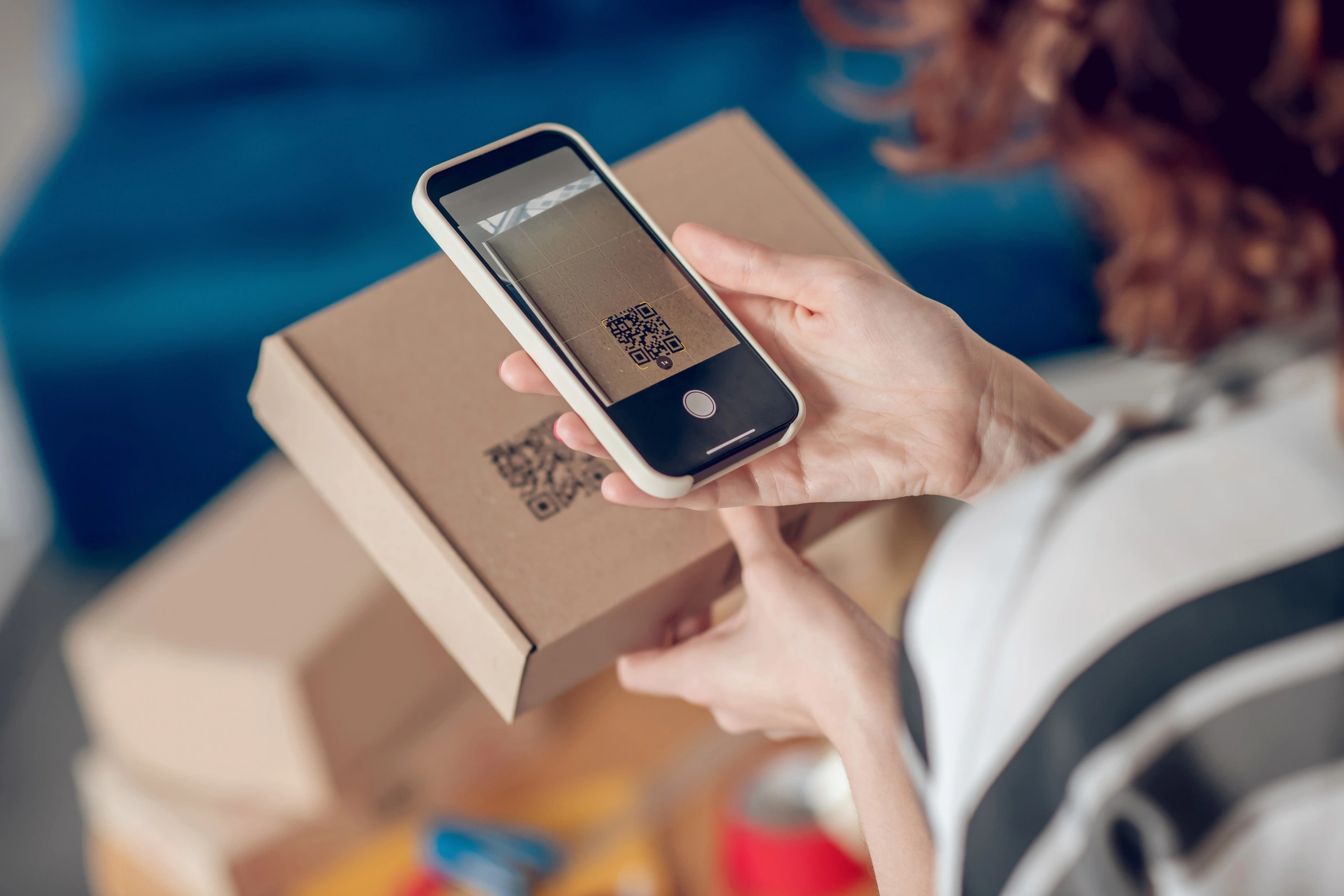
7. Challenges and Market Barriers
Implementation Cost and Complexity
Despite remarkable growth projections, the industry faces significant implementation challenges, particularly regarding cost and complexity barriers that can deter small and mid-sized enterprises from adopting advanced anti-counterfeit measures. High upfront costs for RFID infrastructure, complex integration requirements, and ongoing operational expenses create substantial barriers for smaller companies.
These challenges can potentially create market fragmentation where large enterprises benefit from sophisticated protection while smaller companies remain vulnerable to counterfeiting. Industry leaders are addressing these challenges through scalable solutions, reduced-cost technologies, and simplified implementation processes.
Interoperability and Standardization
Ensuring seamless functionality across global markets with varying technological standards and regulatory requirements remains a significant challenge for multinational cosmetics brands. The lack of universal standards for anti-counterfeit technologies creates implementation complexity and potentially reduces effectiveness across different markets.
Industry organizations and regulatory bodies are working toward standardization initiatives that could reduce implementation complexity while improving interoperability. These efforts are critical for achieving the market growth projections and ensuring widespread adoption across diverse global markets.
Sustainability and Environmental Impact
The recyclability of anti-counterfeit materials is under increasing scrutiny as the industry seeks to balance security needs with environmental responsibility. Traditional security materials often incorporate complex multilayer structures that complicate recycling processes and potentially conflict with sustainability objectives.
The development of environmentally compatible security solutions represents both a challenge and an opportunity for market growth. Companies successfully developing sustainable security solutions are likely to gain competitive advantages while addressing regulatory requirements and consumer preferences.
8. Future Market Opportunities and Projections
Incremental Market Growth
The USD 58.3 billion incremental market opportunity projected by 2035 represents substantial growth potential driven by multi-stakeholder collaboration, robust regulatory enforcement, and continued technological maturation. This growth will be supported by expanding regulatory requirements, increasing consumer awareness, and continued technological advancement.
Brands prioritizing AI-based authentication, blockchain traceability, and sustainable verification materials are strategically positioned to secure market share and maintain consumer trust in this evolving ecosystem. The integration of multiple technologies creates comprehensive protection systems that address diverse counterfeiting threats while providing enhanced consumer engagement opportunities.
Emerging Technology Integration
The convergence of RFID, AI, blockchain, and IoT technologies creates unprecedented opportunities for comprehensive brand protection solutions. These integrated systems provide multiple layers of security while delivering valuable business intelligence and consumer engagement capabilities.
Future developments will likely focus on seamless technology integration, reduced implementation costs, improved sustainability, and enhanced consumer experiences. The companies successfully navigating these technological convergences will be positioned for significant market leadership.
Global Market Expansion
Expanding regulatory frameworks in emerging markets create significant growth opportunities for anti-counterfeit solution providers. As developing economies implement stronger intellectual property protection and consumer safety regulations, demand for sophisticated authentication solutions will increase substantially.
The expansion of e-commerce in emerging markets also creates immediate opportunities for digital authentication solutions that can provide cost-effective protection for brands entering new markets. This global expansion represents one of the most significant growth drivers for the industry over the next decade.
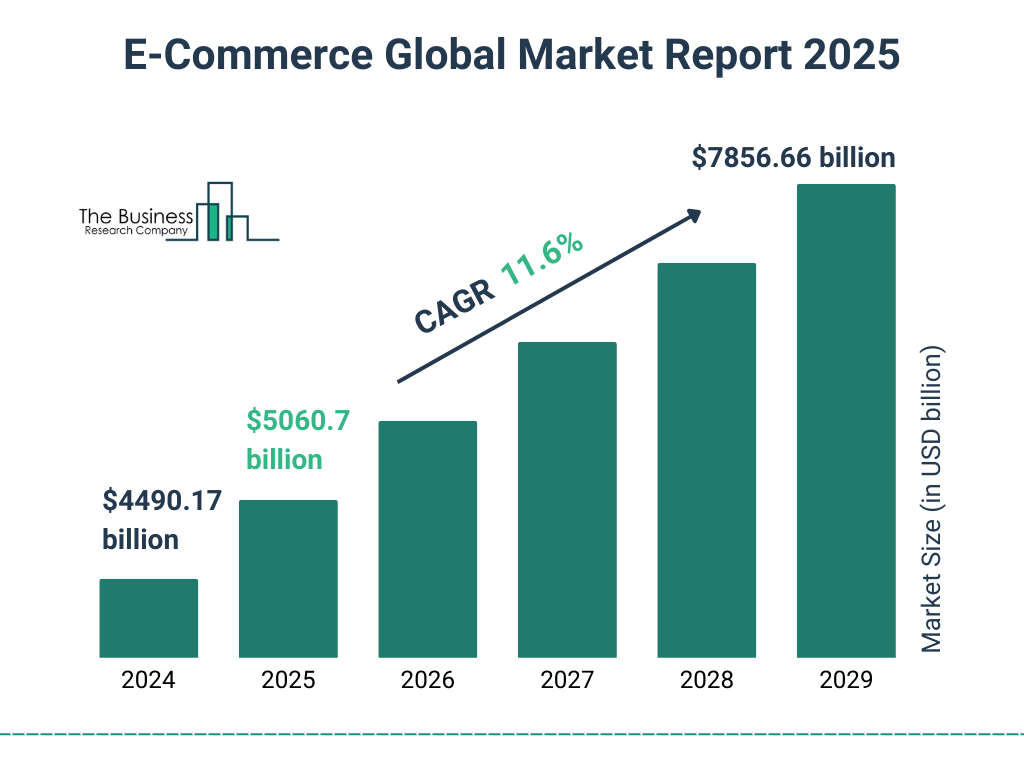
9. Competitive Landscape and Market Leadership
Innovation and Differentiation Strategies
Leading companies are pursuing diverse innovation strategies to maintain competitive advantages:
- Technology Integration: Companies are developing comprehensive platforms that integrate multiple authentication technologies, creating seamless solutions that address diverse client needs while providing superior protection against sophisticated counterfeiting attempts.
- Sustainability Focus: Environmental considerations are becoming increasingly important in competitive differentiation, with companies investing in biodegradable materials, recyclable security features, and environmentally responsible manufacturing processes.
- Global Expansion: Strategic geographic expansion, exemplified by Avery Dennison’s Indian facility investment, demonstrates how market leaders are positioning themselves for growth in emerging markets with significant potential.
10. Consumer Impact and Market Transformation
Enhanced Shopping Experiences
The widespread adoption of advanced anti-counterfeit technologies is fundamentally transforming consumer experiences across multiple dimensions. Consumers can now verify product authenticity instantly using smartphone applications that interact with RFID tags, QR codes, or NFC-enabled packaging, eliminating uncertainty about product legitimacy, especially in online purchases.
This technological empowerment creates unprecedented consumer confidence while providing brands with valuable engagement opportunities and consumer behavior insights. The ability to access detailed product information, including manufacturing dates, ingredient sourcing, and recommended usage guidelines, fosters greater transparency in the beauty industry.
Premium Product Justification
Advanced authentication capabilities help justify premium pricing for luxury cosmetics brands, as consumers gain confidence in the value proposition of genuine products. The ability to verify authenticity creates tangible value that supports price premiums while protecting brand positioning against counterfeit alternatives.
This value creation is particularly important in e-commerce environments where consumers cannot physically examine products before purchase. Authentication technology bridges this gap by providing digital verification that creates equivalent confidence to in-person examination.
Brand Loyalty and Trust Development
Comprehensive authentication systems foster stronger brand relationships by demonstrating commitment to consumer safety and product quality. Brands that invest in sophisticated anti-counterfeit measures signal quality commitments that resonate with increasingly conscious consumers.
The transparency enabled by modern authentication systems also appeals to consumers seeking greater visibility into product origins, manufacturing practices, and supply chain ethics. This transparency creates differentiation opportunities while building stronger consumer relationships.
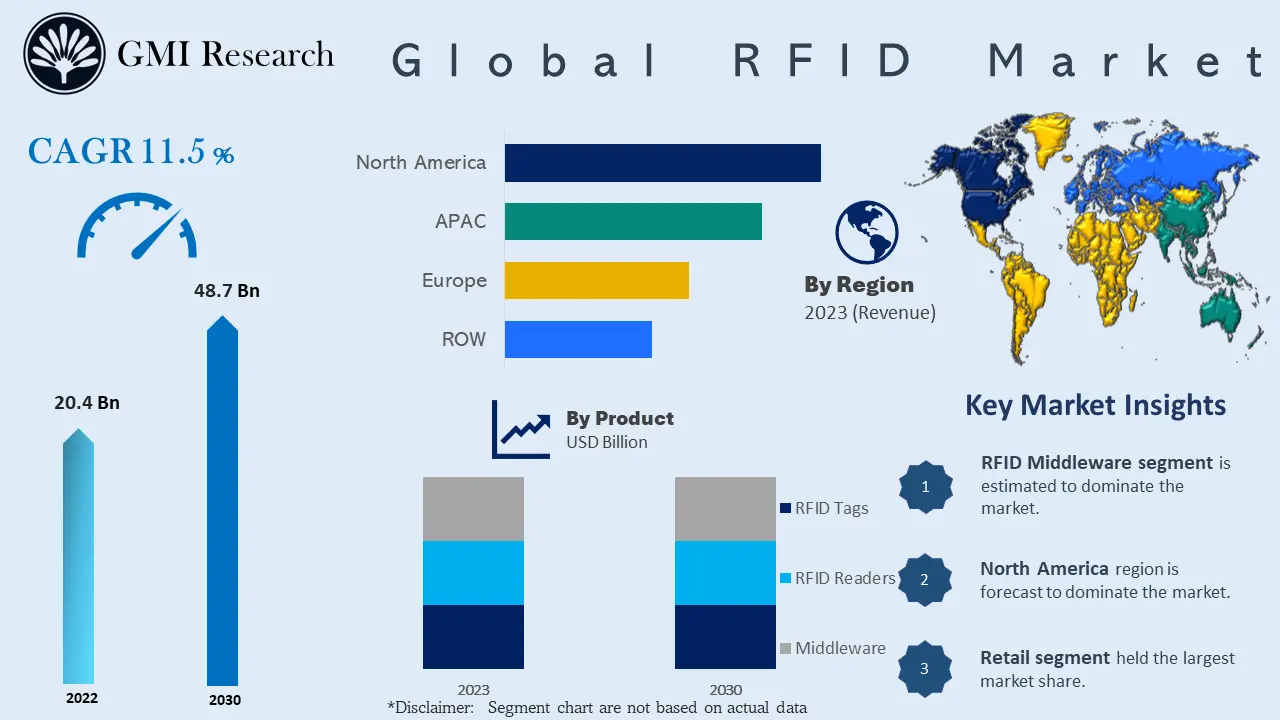
11. Conclusion: A Transformed Industry Landscape
The anti-counterfeit revolution in cosmetics packaging represents far more than technological advancement—it signals a fundamental transformation toward a more secure, transparent, and consumer-centric industry. The explosive growth projected for the anti-counterfeit cosmetic packaging market, from USD 43.3 billion in 2025 to USD 101.6 billion by 2035, reflects the industry’s recognition that sophisticated protection measures are no longer optional but essential for sustainable business success.
RFID technology’s dominant 64% market share by 2025 demonstrates the technology’s superior effectiveness in addressing complex industry challenges while providing comprehensive business benefits beyond simple authentication. The integration of AI, blockchain, and IoT technologies creates unprecedented opportunities for comprehensive brand protection while delivering valuable business intelligence and consumer engagement capabilities.
The case studies of companies like Avery Dennison, Korean cosmetic brands, and global enterprises like Unilever demonstrate practical implementation success while highlighting the diverse approaches necessary for different market segments and product categories. These real-world implementations provide valuable insights for companies considering anti-counterfeit investments while demonstrating achievable returns on technology investments.
The challenges facing the industry, including implementation costs, complexity barriers, and sustainability considerations, represent opportunities for continued innovation and market development. The companies successfully addressing these challenges while developing sustainable, cost-effective solutions will be positioned for market leadership in the USD 58.3 billion incremental market opportunity projected by 2035.
As the cosmetics industry continues its transformation, the convergence of consumer safety, brand protection, and technological innovation creates unprecedented opportunities for companies that successfully navigate this complex landscape. The anti-counterfeit revolution is not just reshaping how beauty products are protected—it is fundamentally redefining how brands interact with consumers, manage supply chains, and compete in an increasingly sophisticated global marketplace.

